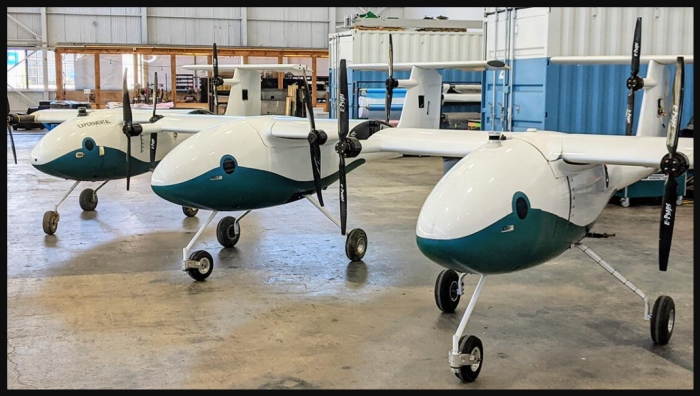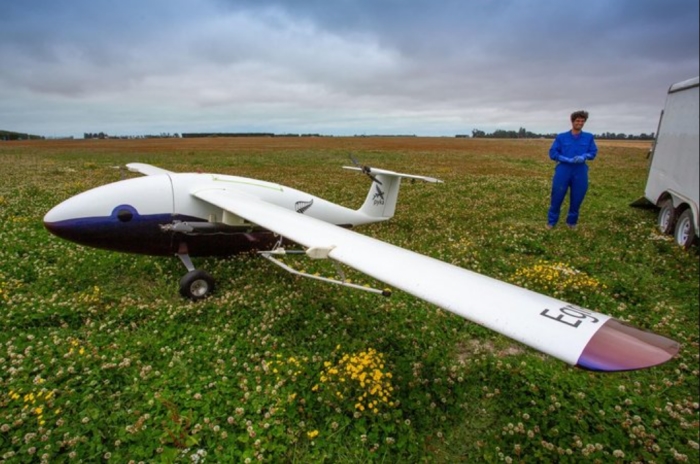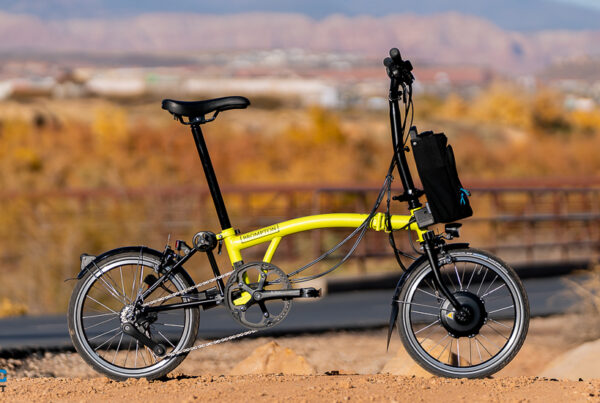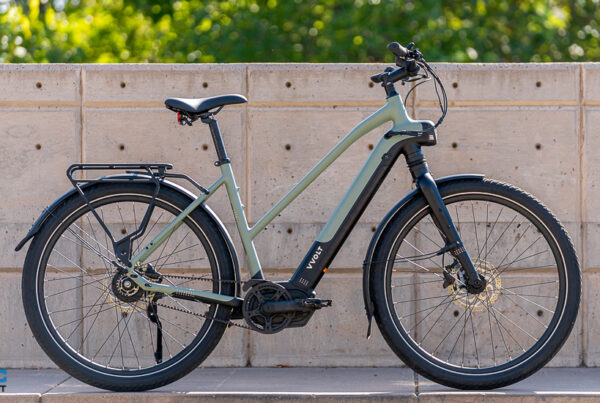Pyka Started with un-manned electric drones that can perform crop-dusting duties, and now they are moving up to small passenger and cargo aircraft.
Pyka is located in San Francisco, California, and was started by 28 year old CEO Michael Norcia, along with Chuma Ogunwole, Kyle Moore, and Nathan White. Norcia’s first job after graduating from UC Davis was working on the “Kitty Hawk” air taxi that was under development by Larry Page (from Google). Norcia came to the conclusion that a vertical-lift air taxi was years away from viability, and a “Short Take Off and Landing ” STOL aircraft (that did not carry humans) was a much faster way to a self-sustaining aircraft business that uses an electric drivetrain, and…I agree.
Pyka identified crop spraying as the best candidate to rapid success. The aircraft would fly over crops, spraying fertilizers and pesticides, so any potential crash would not injure any people. Also, farmers would not need a pilots license to operate the drone. It is anticipated that most farmers will lease a service, and it’s likely that traditional crop-dusters will add this to their fleet.
Crop dusters fly many hours during their high season, and this means the engines require an expensive inspection on a strict schedule, and also an engine rebuild when they reach a certain number of flight-hours…even if they are functioning perfectly. Electric aircraft prototype drivetrains have a much longer “Time Before Overhaul “/ TBO. Not only does this save money over the life of the aircraft, but the downtime is greatly minimized. Swapping a motor or worn battery pack on even the largest drones only takes minutes, putting the drone back to work right away.
Chuma Ogunwole is their COO, and a Harvard MBA; Kyle Moore and Nathan White are software engineers who are making Pyka’s aircraft more autonomous, with less ground-operator input. The company recently acquired a new president in Dan Grossman, formerly of Ford, and the Zipcar “car sharing” service. They’re shipping aircraft right now, and are planning on shipping one plane a month next year. If all goes well the “P3” passenger version could be in the air as soon as 2025.
The new P3 prototype’s configuration and size are based on regulatory requirements. Planes with limited cargo weights and passenger counts fall under a simpler, more permissive set of regulations, such as airlines that fly with nine or fewer seats. Therefore, the safest path forward is a nine-passenger plane that will make progress on efficiency, affordability, and proof-of-concept…while not trying to reinvent the wheel.
$11 million of venture capital was provided by Prime Movers Lab, Y Combinator, Greycroft, Data Collective, and Bold Capital Partners, so…this is NOT smoke and mirrors.
__________________________________________________
The Pyka Egret
The Egret has a wing span of 25.6 feet (7.8m) and maximum take-off weight of approximately 595 LB (270kg), with 200lb (90kg) being available for payload.
In the picture above, the box trailer on the right is the transport vehicle for the Egret, which has detachable wings. Not only is the Egret easily transportable, but it can take off and land on dirt roads of the type that are usually found adjacent to farms.
The bodies are made in a composites shop in Sacramento, California. The motors are three 8kW units (11 HP each), it has a 200-lb. (90-kg) payload capacity, cruises at 90 miles per hour, and can take off and land in 300 feet (90 meters). While Pyka hopes to gain full approval for its planes to conduct commercial operations in North America, it has already been flying them in the Canterbury region of New Zealand’s South Island, and also farms at Costa Rica and Ecuador for bananas.
The banana crop in particular requires frequent spraying, which amplifies the cost savings that the Pyka drones provide.
The Egret can spray about a hundred acres per hour, about the same as a helicopter. Drones and helicopters can fly lower to the ground, which is more efficient and accurate. Pyka claims to be the only company in the world with a commercially approved large autonomous electric aircraft.
__________________________________________________
The Pyka Pelican
This larger drone is roughly 500lb, 20 feet (6m) long, has a 38 ft (11.6 m) wingspan, carries a spray payload of up to 625 lb (283 kg), and can take-off and land within a space of just 150 ft (45.7 m). Thrust is provided by three 20-kW electric motors (27-HP each). It uses three motors, two on the wings, and one in back. They deliver a cruising speed of 90 mph (145 km/h). These motors are powered by a lithium-polymer battery pack, and on a full charge Pyka claims it is good for a flight range of 70 miles (112 km).

In October of 2021, the Pelican was granted a special airworthiness certificate by the US Federal Aviation Administration. This will allow it to be demonstrated at American farms, so contractors can be trained in its use. The Pelican can spray up to 135 acres (54.6 hectares) of land per hour, and that figure is based on a spray-rate of two US gallons (7.6 L) per acre. This includes filling time, turn-arounds and battery swaps.

The Pelican is estimated to have 50% of the operating costs of typical manned crop-spraying airplanes, and will remove pilots from harm’s way, in a business where skimming fields at 140 miles per hour sometimes results in accidents and death.
The Pelicans’ three 20-kilowatt motors can keep it on task for about 30 minutes, with a total flight time of about 45 minutes, taking off and landing in a distance of roughly 500-feet, on a dirt road or cleared section of a field. It takes about one minute to swap out batteries.

__________________________________________________
The P3 Prototype


The Distinct feature of the P3 is that it has two motor pods, with each having two motors and two propellers, for a total of four motors and propellers. Two of the motors are pushing behind the wing, two are pulling in front, and this presented the P3’s designers with some interesting options.
Rather than use expensive and heavy adjustable-pitch propellers, all four propellers have a fixed pitch. The rear-facing propellers are always in use, and their pitch is optimized for efficient cruising. The front facing propellers are only used during takeoff, and once at cruising altitude, they fold away to reduce drag. The blades on the forward propellers are wider and have an aggressive pitch angle to provide excellent take-off thrust.
The fold-away propellers are a well-developed product that has already been in use for self-launching sail-planes, for several decades. In fact, every major moving part of the Pelican is an existing and accepted component, such as the landing gear and the surface controls. By using as many well-proven components as possible, the Pelican is on schedule for certification in 2025.
__________________________________________________
Cessna 337 Skymaster (and Military O-2)
Seeing the push/pull motor-pods on the P3 reminded me of one of my favorite aircraft, the Cessna 337, introduced in 1965.
Years ago, I stumbled across the Cessna 337, and it has two inline engines, mounted fore and aft of the central body. I’m no engineer, but I instantly recognized that if you were flying and suddenly one of the engines was having trouble, this configuration would be much easier to control than two forward-facing “tractor” propellers in the standard layout. For those…when one engine dies, the plane is constantly trying to “yaw” to one side.
The 337 needs both engines to take off within it’s rated length of runway, but once flying it can safely fly and land with just one of it’s engines. Managing to control a 337 with only one engine running is considered so much easier than flying a conventional twin-engined aircraft that…a license for a twin-engine 337 does not allow you to fly the conventional style, like a Beechcraft Baron (click here).

In the 1960’s, the US Army needed what’s called a “Forward Observer” aircraft. They had previously been using a light single-engined airplane, but occasionally…enemy ground fire would disable it’s engine, leading the pilot and observer to parachute into enemy territory. When the Army saw the Cessna 337 Skymaster, they commissioned a military variant, called the O-2.
It was a success, since shooting out one engine allowed it to escape on the other one. But, its unusual configuration was very easy for training existing pilots to use. This made me curious as to why they are no longer made, since the benefits are obvious.
On the Cessna 337, the rear propeller chops through “dirty air” which has been disturbed by the front propeller and the main body. This means that a conventional twin-engine airplane like the Beechcraft would have slightly better performance and fuel-economy than the 337, even if they were both equipped with the exact same engines and propellers.
That being said, the use of the fold-back propellers on the Pelican means that this isn’t an issue. By having four controllers, four engines, and four propellers…the Pelican has exceptional redundancy. It can easily fly on any two of those engines, so certification for carrying passengers should not present any difficulties.
If “push / pull” aircraft are of interest, you might also enjoy the Rutan Model-76 Voyager, the Adam A500, and the WWII Up to 335…
__________________________________________________

__________________________________________________
Written by Ron/spinningmagnets, August 2021
Source link








